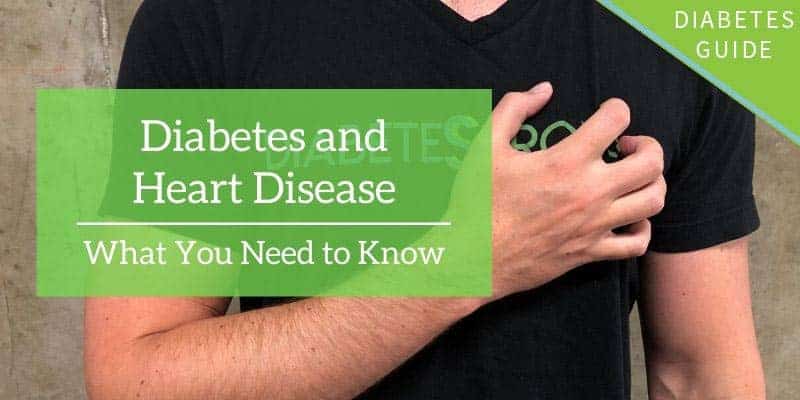Your blood sugar levels impact every part of your body — including your heart. And many of the same habits and health issues that increase your risk for heart disease also increase the risk of type 2 diabetes.
This means if you have one, it’s likely your body may develop the other. Fortunately, there are many things you can to reduce your risk of heart disease if you already have diabetes.
Let’s take a closer look at the relationship between heart disease and diabetes.
What is heart disease?
“Many different types of heart disease exist,” explains the National Institute of Diabetes and Kidney and Digestive Diseases (NIDDK). “The most common cause of heart disease is narrowing or blockage of the blood vessels that supply blood to the heart. This is called coronary artery disease and happens slowly over time. It’s the major reason people have heart attacks.”
Severe blockages are the direct cause of a traditional heart attack.
Other issues can also develop in the valves within your heart, impairing their ability to pump blood properly and potentially lead to heart failure.
Symptoms of a heart attack
A heart attack is the physical result of heart disease, and these are the most common signs and symptoms according to the American Heart Association.
- Chest pain, pressure, squeezing, and/or discomfort: This intense feeling of discomfort usually occurs in the very center of your chest and lasts a few minutes. That discomfort can come and go for a few days or weeks if left untreated until it results in a full-blown heart attack. Most heart attacks involve discomfort in the center of the chest that lasts more than a few minutes – or it may go away and then return.
- Discomfort in other parts of the body: Women, for example, often experience pain in their backs or jaws, along with nausea. Symptoms can include pain or discomfort in one or both arms, the back, neck, jaw or stomach.
- Shortness of breath: Unexplained shortness of breath can develop with or without chest pain.
- Less common symptoms: Some people break out in a cold sweat or experience sudden lightheadedness during a heart attack.
If you suspect you’re experiencing signs of a heart attack, call 911 or ask a friend to drive you to the emergency department immediately. Do not drive yourself to the hospital — having a heart attack while driving could seriously put your life and the life of others in severe danger.
Why diabetes increases your risk of heart disease
For people with diabetes, heart disease shouldn’t be taken lightly.
“Cardiovascular disease is the leading cause of morbidity and mortality in people with diabetes,” explains 2019 research, “and deaths from heart disease are two to four times higher among adults with type 2 diabetes.”
Similar to the way high blood sugars can damage the blood vessels and nerves in your fingers, toes, and eyes, they damage the blood vessels and nerves that manage the healthy function of your heart, too.
“The longer you have diabetes, the higher the chances that you will develop heart disease,” explains the NIDDK.
In fact, according to the NIDDK, people with diabetes tend to develop heart disease at a younger age than those without diabetes.
“In adults with diabetes, the most common causes of death are heart disease and stroke. Adults with diabetes are nearly twice as likely to die from heart disease or stroke as people without diabetes.”
Fortunately, the healthier your blood sugar levels are, the less likely you are to develop heart disease or experience a heart attack! At the end of the day, a significant portion of the risk of heart disease is within your control.
Factors that increase the risk of heart disease in people with diabetes — and what you can do about it!
There are several things that increase your risk of developing heart disease significantly — especially when these things are combined with diabetes.
Smoking cigarettes
Smoking significantly narrows your blood vessels. In people with diabetes, this is extra concerning because diabetes also narrows your blood vessels. This double-whammy puts you at a significant risk of developing blockages and experiencing a heart attack, explains the NIDDK.
Smoking also increases insulin resistance, making it more difficult to maintain healthy blood sugar levels which further increases your risk of heart disease.
And last, but not least, smoking significantly increases your risk of foot ulcers and amputations because of the damage it causes not just in your lungs but throughout the nerves and blood vessels in your entire body — including your feet!
For support in your quest to quit smoking, visit Lung.org.
High LDL and low HDL cholesterol levels
Cholesterol has been given a falsely bad reputation in the media but the truth is that your body needs both LDL (“bad”) cholesterol and HDL (“good”) cholesterol.
LDL goal: less than 100.
According to the American Heart Association, your LDL cholesterol promotes the buildup of fat in your arteries (also known as atherosclerosis). This build-up narrows your arteries and contributes to blockages that can then cause a heart attack.
HDL goal: more than 60.
Your HDL (“good”) cholesterol is the hero that carries LDL cholesterol away from your arteries so it can be broken down by your liver and excreted. Your HDL cholesterol can manage and eliminate about 25 to 33 percent of your LDL cholesterol, which means the higher your HDL is, the healthier your heart will be.
Just as too much LDL puts you at great risk for heart disease, too little HDL can do the same.
Tip: Learn everything you need to know about reducing cholesterol levels.
Being overweight or obese
While being overweight or obese is likely a challenge within your diabetes management, it also affects your overall heart health, risk of heart disease, cholesterol, and blood pressure, according to the NIDDK.
The most concerning body fat is excess fat around your waist (versus excess weight in your thighs, for example).
You can measure your own waist to determine if this may be a significant concern for you with these guidelines from the NIDDK:
- How to measure your waistline correctly
- For men: more than 40 inches is a significant concern
- For women: more than 35 inches is a significant concern
Tip: Learn everything you need to know about losing weight with diabetes.
Family history of heart disease
If someone in your family has struggled with heart disease and a heart attack before the age of 50, you should take this as a serious sign that your risk of heart disease is higher than normal.
If heart disease does run in your family, your daily choices around food, exercise, and cigarettes will play a tremendous role in your risk of having a heart attack or stroke.
A family history does not mean you are doomed for a diagnosis of heart disease. Instead, it simply means your body has a predisposition to developing heart disease which means you should do everything you can to minimize these factors that contribute to it.
Tip: Take action today by improving your diet and getting physical activity every day — like a simple daily walk!
Preventing heart disease if you have diabetes
None of this should surprise you because the steps towards preventing heart disease are nearly identical to the steps towards managing and preventing type 2 diabetes.
- Eat a diet of mostly whole foods.
- Drink water and unsweetened beverages instead of soda, etc.
- Get up and move every single day.
- Quit smoking.
- Limit your alcohol consumption.
- Maintain a healthy body weight.
- Work with your healthcare team to improve your blood sugar levels.
Quite simply, it comes to making good choices most of the time. You don’t have to be perfect, you just have to make good choices most of the time.
Let this empower you to protect your heart health!
Having diabetes doesn’t mean you’re doomed to develop heart disease.
Remember, your daily choices impact your daily and future health.
This is a good thing! It means you have significant power over your risk of heart disease, stroke, and heart attack. You don’t have to make perfect choices all the time in order to lower your risk of heart disease. Instead, try making small changes in your health habits one at a time.
Suggested next posts:
If you found this guide to diabetes and heart disease useful, please sign up for our newsletter (and get a free chapter from the Fit With Diabetes eBook) using the form below. We send out a weekly newsletter with the latest posts and recipes from Diabetes Strong.




